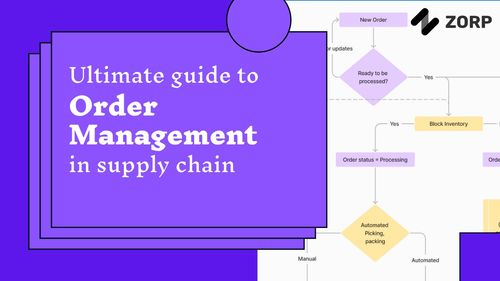Omnichannel ecommerce refers to selling through multiple sales channels while providing a unified, seamless experience for customers. With the rise of ecommerce, customers now expect to be able to browse and buy products through various channels such as online stores, mobile apps, social media and brick-and-mortar retail.
Implementing an omnichannel sales strategy comes with its fair share of challenges, especially when it comes to inventory management across channels. However, when executed successfully, omnichannel retail can help boost sales and create a more convenient shopping journey for customers.
In this blog post, we’ll explore what omnichannel ecommerce entails, look at popular platforms, discuss inventory management challenges, and provide tips for setting up unified inventory across channels.
What is Omnichannel Ecommerce?
Omnichannel ecommerce involves integrating your sales channels to provide a consistent customer experience across all touchpoints. The goal is to allow customers to seamlessly research, purchase, pickup and return products through multiple avenues such as:
- Ecommerce website
- Mobile app
- Brick-and-mortar retail stores
- Social media platforms
- Online marketplaces like Amazon and eBay
- Catalog shopping via phone, mail, fax etc.
When executing omnichannel sales, the backend technology, inventory, order management, fulfillment and customer data is integrated across channels. This creates a unified brand experience for shoppers, no matter how or where they browse and purchase.
For example, a customer may see a product on your Instagram page, then research reviews on your website, purchase through your mobile app, and opt to pick up in-store. Or they may purchase online and return an item at a physical store location. Omnichannel makes these types of journeys possible.
Popular Ecommerce Platforms
There are many ecommerce platforms that provide tools and functionality to manage multichannel selling. Some popular options include:
- Shopify – Shopify allows businesses to sell through online stores, brick-and-mortar locations, social media, online marketplaces, pop-up shops and more. Their platform handles centralized inventory, order management, and reporting across channels.
- Magento – A flexible open-source ecommerce platform that works well for omnichannel setups. Extensions are available to integrate POS system, order management and inventory.
- BigCommerce – BigCommerce enables selling across online storefronts, markets like Amazon and eBay, social platforms and in-person. Multi-channel features help manage inventory.
- Salesforce Commerce Cloud – Allows connection of online stores, POS systems, marketplaces, etc. Provides connectivity via APIs and management of customers, orders and products across channels.
- WooCommerce – As an open-source WordPress plugin, WooCommerce allows you to sell online and in-store. Additional plugins expand capabilities to manage multichannel inventories.
- Shopify POS – Shopify’s POS system syncs seamlessly with their ecommerce platform. Provides centralized inventory tracking and order management across online and brick-and-mortar sales channels.
These platforms make it easier to get an omnichannel operation up and running by providing the necessary built-in tools and integrations.
Inventory Management Challenges
One of the biggest challenges faced with omnichannel retail is keeping inventory synchronized across all sales and fulfillment channels.
Some issues that can arise with multi-channel inventory tracking include:
- Out of stock errors – Having insufficient inventory levels listed on a channel because stock sold out on another channel wasn’t updated in time.
- Overselling – Accepting more orders than current inventory levels allow, resulting in order cancellations and unhappy customers.
- Accuracy issues – Having incorrect inventory counts if levels aren’t updated properly across channels.
- Delivery delays – Inventory shortages can cause shipping delays if customers purchase out-of-stock items.
- Data conflicts – If inventory data differs between channels, it causes conflicts and inaccuracies.
- Manual errors – Mistakes can happen if inventory records are managed manually across different platforms.
The biggest culprit behind these issues is that inventory updates aren’t synchronized in real-time across all channels. For example, units sold on your online storefront decreases the available stock, but if that sale doesn’t automatically update the inventory level shown on your Amazon marketplace listing, it can quickly become inaccurate.
Setting up Real-Time Multi-Channel Inventory Tracking
To avoid headaches with omnichannel inventory control, you need to implement centralized, real-time tracking across all sales channels, warehouses and physical store locations.
Steps to accomplish this include:
- Integrate inventory management between online storefronts and in-store POS systems. This allows both to pull from the same master product catalog and adjust stock levels in tandem.
- Connect order management systems across channels to automatically sync sales and inventory deductions across the board. If a unit is purchased on eBay, inventory levels reduce simultaneously on your Shopify store, Amazon, order management platforms etc.
- Use inventory management software that connects in real-time to all sales channels and locations to monitor stock levels. Updates are pushed out systemwide.
- Tag inventory with unique IDs to track through distribution chains and sales lifecycles. This provides visibility as units move between locations or get sold.
- Track inventory accurately down to the SKU level. Don’t just look at total product inventory, monitor each distinct variant.
- Integrate barcoding and scanning to reduce errors in order fulfillment, shipping, returns etc. This improves accuracy as inventory is moved around.
- Reconcile inventory data often to check for discrepancies between different systems. Identify the causes of errors.
- Provide store associates with mobile POS access to inventory systems so levels can be checked on the fly to prevent overselling.
- Automate processes like placement of purchase orders and re-ordering of stock based on sales activity and forecasting.
By leveraging the right platforms and inventory monitoring technology, omnichannel sellers can stay on top of real-time stock levels to prevent common issues that disrupt the customer experience.
Omnichannel Inventory Software
Specialized omnichannel inventory management systems help retailers connect and synchronize product availability across all sales and fulfillment channels.
One leading option is ZORP, an omnichannel inventory automation platform designed for complex multi-channel ecommerce. Benefits of ZORP include:
- Real-time inventory updates across all integrated channels.
- Automated order management and inventory allocation workflows.
- Connection to POS systems, order management tools, shipping platforms, etc.
- Inventory and order tracking across warehouses and 3PL locations.
- Full visibility into inventory status across the omnichannel operation.
- Identification of root causes of stockouts and errors.
- Data analysis to optimize omnichannel profitability.
- Scalable to support enterprise omnichannel brands.
- Flexible APIs for integration with existing systems.
For omnichannel sellers struggling with disjointed inventory tracking across channels, ZORP brings everything together into a centralized, real-time system. This prevents stockouts, improves accuracy, and provides the full visibility needed to optimize an omnichannel distribution strategy.
Conclusion
Implementing effective omnichannel ecommerce presents challenges – especially when it comes to keeping inventory synchronized. By leveraging unified commerce platforms and inventory management solutions, retailers can connect sales channels to track real-time stock availability. This helps create seamless omnichannel customer experiences that increase sales and prevent lost revenue due to out-of-stocks. With the right tools and strategy, omnichannel success is achievable.



